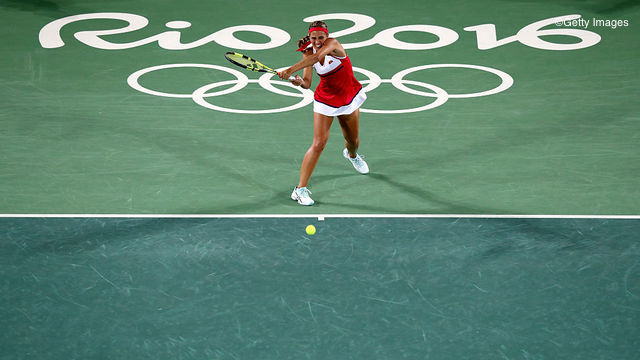Rio: The Gold Medal Matches

The Gold Medal match in women’s singles was one to remember as Monica Puig took on World No.2 and reigning Australian Open champion Angelique Kerber.

Puig pulled off the upset of Olympics to knock Kerber out in three tight sets, becoming the first Puerto Rican to win a gold medal.

Puig had made it her season goal to win the Olympics – even naming her dog Rio – but the yougster could hardly believe her dream had come true after the match.

Puig led a star-studded podium featuring Kerber, who became the first German to win a medal in tennis since Stefanie Graf, and two-time Wimbledon winner Petra Kvitova taking the bronze.

Pairing up for the Olympic Games four years ago in London, Ekaterina Makarova and Elena Vesnina came straight from winning the Rogers Cup to roar into the Gold Medal match in women’s doubles on Sunday.

Taking the Russians on were a tough team composed of World Co-No.1 Martina Hingis – who was playing her first Olympic Games since 1996 – and Timea Bacsinszky, who replaced Belinda Bencic after injury ruled her out of the games. Hingis and Bacsinszky saved a match point in their semifinal against Andrea Hlavackova and Lucie Hradecka.

Makarova and Vesnina spent 10 months apart as the former addressed injury concerns, but the pair reunited in the spring and have amassed a 25-5 record since Madrid, winning a ninth straight match to oust Hingis and Bacsinszky in straight sets.

The women’s doubles podium was complete when Lucie Safarova and Barbora Strycova – who began the tournament by knocking out three-time women’s doubles gold medalists Venus and Serena Williams – won the all-Czech bronze medal match in straight sets.

The final Gold medal match of the day was in mixed doubles, with Bethanie Mattek-Sands and Jack Sock taking on four-time Olympic Gold medalist Venus Williams and Rajeev Ram.

Venus was aiming to become the first player to win gold in all three tennis events, but couldn’t convert a one-set lead or a 6-3 advantage in the match tie-break. Still, the American leaves Rio with a fifth Olympic medal in five appearances.

Mattek-Sands has struggled with injuries in the last few years, and recovered from a false alarm when Sock appeared to seal victory on their first match point to capture the gold medal one point later.

Mattek-Sands wins a gold medal in her Olympic debut, while Lucie Hradecka adds to her Olympic silver medal from 2012 alongside Radek Stepanek by taking the bronze.










